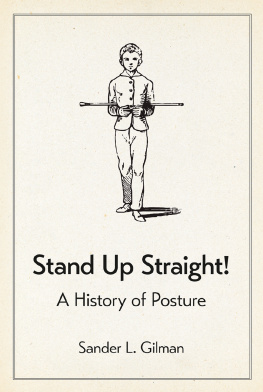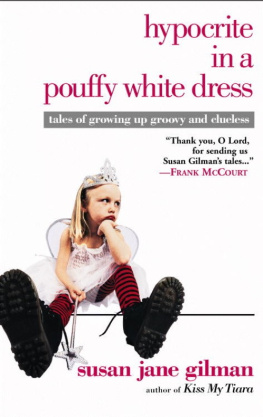Gilman - Obesity: the biography
Here you can read online Gilman - Obesity: the biography full text of the book (entire story) in english for free. Download pdf and epub, get meaning, cover and reviews about this ebook. City: Oxford, year: 2010, publisher: Oxford University Press, genre: Science. Description of the work, (preface) as well as reviews are available. Best literature library LitArk.com created for fans of good reading and offers a wide selection of genres:
Romance novel
Science fiction
Adventure
Detective
Science
History
Home and family
Prose
Art
Politics
Computer
Non-fiction
Religion
Business
Children
Humor
Choose a favorite category and find really read worthwhile books. Enjoy immersion in the world of imagination, feel the emotions of the characters or learn something new for yourself, make an fascinating discovery.

Obesity: the biography: summary, description and annotation
We offer to read an annotation, description, summary or preface (depends on what the author of the book "Obesity: the biography" wrote himself). If you haven't found the necessary information about the book — write in the comments, we will try to find it.
Gilman: author's other books
Who wrote Obesity: the biography? Find out the surname, the name of the author of the book and a list of all author's works by series.
Obesity: the biography — read online for free the complete book (whole text) full work
Below is the text of the book, divided by pages. System saving the place of the last page read, allows you to conveniently read the book "Obesity: the biography" online for free, without having to search again every time where you left off. Put a bookmark, and you can go to the page where you finished reading at any time.
Font size:
Interval:
Bookmark:
OBESITY
The Biography
Sander L. Gilman


Great Clarendon Street, Oxford OX2 6DP
Oxford University Press is a department of the University of Oxford.
It furthers the Universitys objective of excellence in research, scholarship,
and education by publishing worldwide in
Oxford New York
Auckland Cape Town Dar es Salaam Hong Kong Karachi
Kuala Lumpur Madrid Melbourne Mexico City Nairobi
New Delhi Shanghai Taipei Toronto
With offices in
Argentina Austria Brazil Chile Czech Republic France Greece
Guatemala Hungary Italy Japan Poland Portugal Singapore
South Korea Switzerland Thailand Turkey Ukraine Vietnam
Oxford is a registered trade mark of Oxford University Press
in the UK and in certain other countries
Published in the United States
by Oxford University Press Inc., New York
Sander L. Gilman 2010
The moral rights of the author have been asserted
Database right Oxford University Press (maker)
First published 2010
All rights reserved. No part of this publication may be reproduced,
stored in a retrieval system, or transmitted, in any form or by any means,
without the prior permission in writing of Oxford University Press,
or as expressly permitted by law, or under terms agreed with the appropriate
reprographics rights organization. Enquiries concerning reproduction
outside the scope of the above should be sent to the Rights Department,
Oxford University Press, at the address above
You must not circulate this book in any other binding or cover
and you must impose the same condition on any acquirer
British Library Cataloguing in Publication Data
Data available
Library of Congress Cataloging in Publication Data
Library of Congress Control Number: 2010923435
Typeset by SPI Publisher Services, Pondicherry, India
Printed in Great Britain
on acid-free paper by
Clays Ltd., St Ives Plc
ISBN 9780199557974
1 3 5 7 9 10 8 6 4 2
We are, according to most public health authorities, in the midst of a pandemic of globesity, (global obesity) a term coined in 2001 by the World Health Organization. But is globesity a disease itself or is it a symptom of underlying physiological or psychological illnesses, or a sign of social excess and thus not a disease in the medical sense at all? And is it really new? Given the predicted impact of obesity in the twenty-first century on personal health as well as its social and economic costs for the global economy, the biography of obesity, unlike other medical categories, may well be a necessity in determining our medical as well as social responses to this ancient concern.
This volume is appearing in a series of volumes on the biography of diseases. Obesity is not itself a disease but rather a phenomenological category that reflects the visible manifestation of body size, which potentially can have multiple (as well as multifactorial) causes. No one dies from obesity. One dies from those pathologies that may result from extreme overweight. Indeed, obesity may only be a tertiary cause of morbidity or mortality: it may lead to diabetes, which may lead to vascular disease. Or, and here is the rub, it may not. Many people have and do live with excess weight but the notion of being healthy and overweight seems impossible to imagine in our day. If you are fat, you are sick. Every medical system we shall examine has the category of obesity as a state of ill health. What is important is that the boundaries between the obese and, therefore, unhealthy body and the stout, plump, heavy, well-fleshed, stately, but healthy body are constantly shifting. What is a corpulent but healthy body in one system can and does easily become an obese and ill one in the next. The boundary between acceptable and unacceptable weight and body size is always determined within the medical system and within the general culture. Medicine is a part of general culture and the general culture is shaped by medicine. Today we have drawn the line that delineates obesity just as clearly as it has been drawn in the past, but in a different place. And we now define it as a major public health dilemma much as we have defined tuberculosis or leprosy in the past.
Moreover, our present image of an epidemic of obesity relies on the model of infectious disease and demands a single, clearly defined cause for this disease, much as has been done with other recent epidemics of infectious diseases from tuberculosis to swine flu. The bacteriologist Robert Kochs postulates concerning the nature of infectious disease, developed in the 1890s, demanded that there be an absolute relationship shown between the specific cause of an infection and its appearance in an animal. Obesity is not a disease within the same model (although as we shall see that there is an ongoing desire that at least some obesity may well be the result of viral infection and, therefore, fit Kochs postulates.)
The modern model of obesity has its roots, however, much more in the extrapolation of mortality and morbidity from an epidemiological model of disease. In 1942 Louis Dublin (18821969), a statistician and epidemiologist with the Metropolitan Life Company (MetLife), examined the association between mortality and weight among the four million people insured by his company. He classified people based on height, weight, and body frame (small, medium, or large). He was interested in the use of statistics to quantify the occurrence of diseases, thinking that knowing risk would help to increase peoples life expectancy by changing their actions. The individuals insured by MetLife who maintained the average weight for 25-year-olds seemed to have greater longevity than those who were outside the weight range. Based on these findings, he determined that people who maintained weight in an ideal range would live longer and be at lower risk for MetLife to insure. He published tables containing ideal weight for individuals based on their height and body frame.
The bias in this claim is clear: Dublins population was heavily male, white, middle-class, and urban. But based on this population the body mass index (BMI) was developed, which seems to be a scientific model of healthy and ill bodies based on their weight and height. The BMI is a mathematical value calculated by weight in kilograms divided by height in meters squared (kg/m2). It remains the prime indicator for the definition of obesity today and is highly correlated with health risk. Thus, today underweight is indicated by a BMI of less than 18.5; normal weight by a BMI of 18.5 to 24.9; overweight by a BMI of 25 to 29.9; and obesity by a BMI of 30 or greater. As BMI increases, so does the risk of morbidity and mortality. As we shall see in the chapter on China, scientists in Asia have contested the use of Western models of risk, such as the BMI standards, seeing them as inappropriate for understanding the health of Asian populations. But even Western scientists, while using BMI models, doubt their accuracy. The range has been altered downward over time to include more and more individuals in higher risk categories. Today a variety of alternatives to BMI have been proposed, including waist circumference measurement. Males with a waist circumference greater than 40 inches and females with a waist circumference greater than 35 inches are believed to be at an increased risk for a wide range of illnesses from type 2 diabetes to hypertension and cardiovascular disease. But all such body measures rely on the populations from which the standards have been extrapolated and the fact of the matter is that all of these populations are constantly in flux. While the risk factors for an ever-widening range of diseases are now seen to be correlated with weight, the population from which the standards of weight are taken may well have other predetermining factors for those diseases. This increased emphasis on higher weight as the source of an extensive range of costly illnesses has made obesity the new focus of public anxiety in the twenty-first century.
Next pageFont size:
Interval:
Bookmark:
Similar books «Obesity: the biography»
Look at similar books to Obesity: the biography. We have selected literature similar in name and meaning in the hope of providing readers with more options to find new, interesting, not yet read works.
Discussion, reviews of the book Obesity: the biography and just readers' own opinions. Leave your comments, write what you think about the work, its meaning or the main characters. Specify what exactly you liked and what you didn't like, and why you think so.









